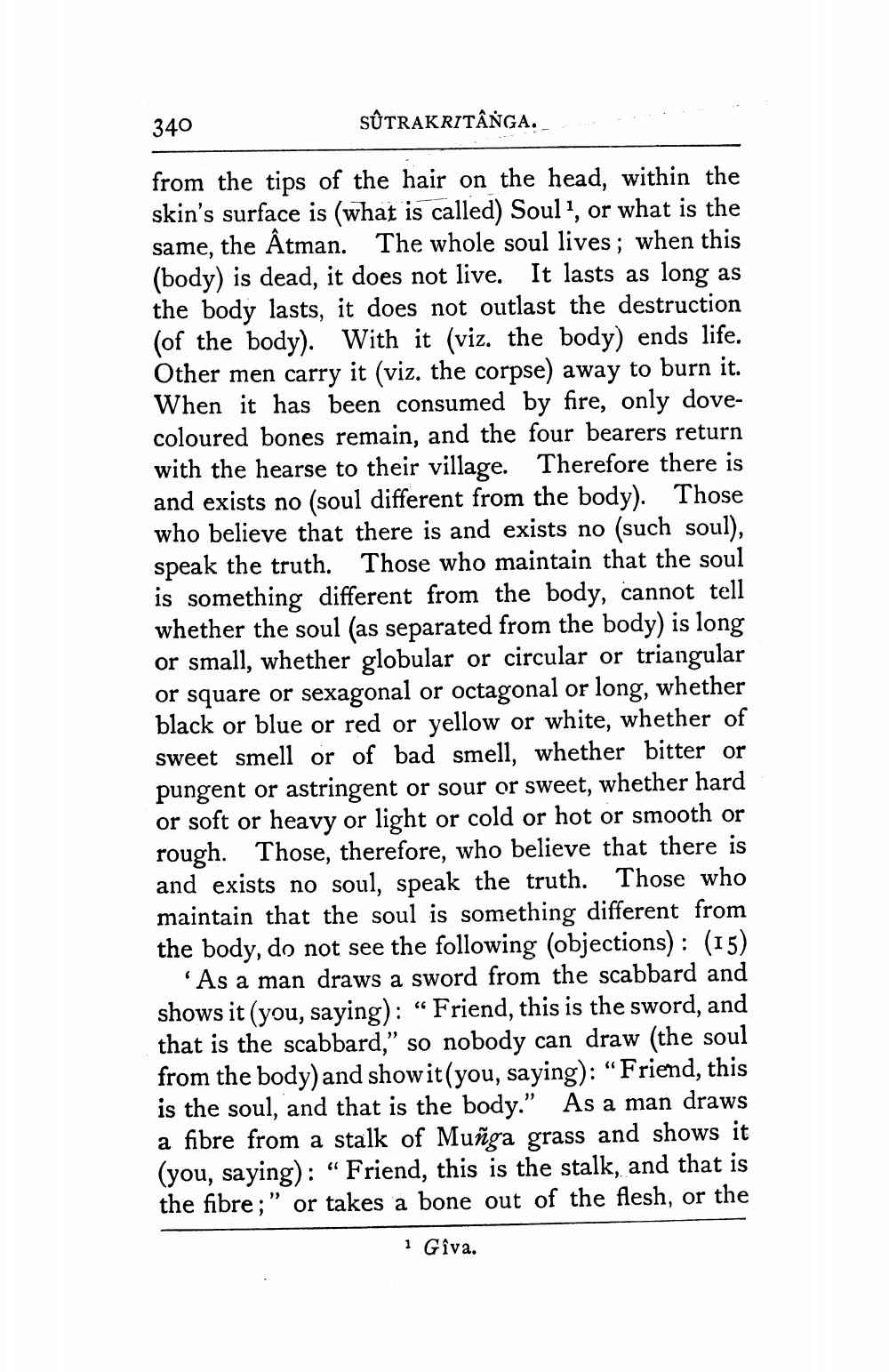________________
340
SUTRAKRITÂNGA..
same,
from the tips of the hair on the head, within the skin's surface is (what is called) Soul1, or what is the the Atman. The whole soul lives; when this (body) is dead, it does not live. It lasts as long as the body lasts, it does not outlast the destruction (of the body). With it (viz. the body) ends life. Other men carry it (viz. the corpse) away to burn it. When it has been consumed by fire, only dovecoloured bones remain, and the four bearers return with the hearse to their village. Therefore there is and exists no (soul different from the body). Those who believe that there is and exists no (such soul), speak the truth. Those who maintain that the soul is something different from the body, cannot tell whether the soul (as separated from the body) is long or small, whether globular or circular or triangular or square or sexagonal or octagonal or long, whether black or blue or red or yellow or white, whether of sweet smell or of bad smell, whether bitter or pungent or astringent or sour or sweet, whether hard or soft or heavy or light or cold or hot or smooth or rough. Those, therefore, who believe that there is and exists no soul, speak the truth. Those who maintain that the soul is something different from the body, do not see the following (objections): (15)
'As a man draws a sword from the scabbard and shows it (you, saying): "Friend, this is the sword, and that is the scabbard," so nobody can draw (the soul from the body) and show it (you, saying): "Friend, this is the soul, and that is the body." As a man draws a fibre from a stalk of Muñga grass and shows it (you, saying): "Friend, this is the stalk, and that is the fibre;' or takes a bone out of the flesh, or the
""
1 Gîva.




